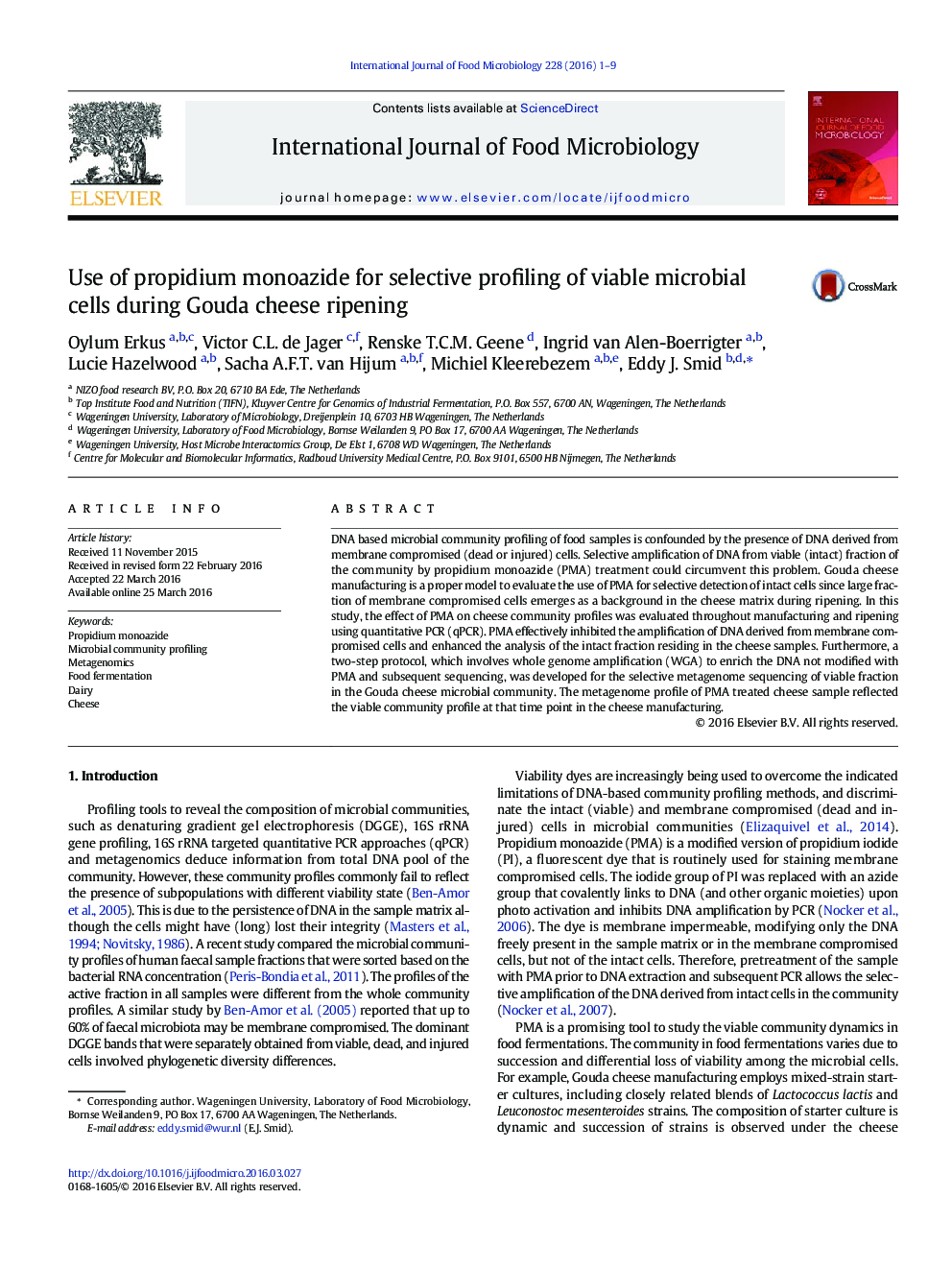| کد مقاله | کد نشریه | سال انتشار | مقاله انگلیسی | نسخه تمام متن |
|---|---|---|---|---|
| 4366265 | 1616555 | 2016 | 9 صفحه PDF | دانلود رایگان |
• PMA effectively inhibits the amplification of DNA derived from membrane compromised bacterial cells in cheese samples.
• PMA enables the detection of intact Lactococcus lactis cells in the cheese matrix.
• The metagenome sequence data of PMA treated cheese samples reflects the viable community profile.
DNA based microbial community profiling of food samples is confounded by the presence of DNA derived from membrane compromised (dead or injured) cells. Selective amplification of DNA from viable (intact) fraction of the community by propidium monoazide (PMA) treatment could circumvent this problem. Gouda cheese manufacturing is a proper model to evaluate the use of PMA for selective detection of intact cells since large fraction of membrane compromised cells emerges as a background in the cheese matrix during ripening. In this study, the effect of PMA on cheese community profiles was evaluated throughout manufacturing and ripening using quantitative PCR (qPCR). PMA effectively inhibited the amplification of DNA derived from membrane compromised cells and enhanced the analysis of the intact fraction residing in the cheese samples. Furthermore, a two-step protocol, which involves whole genome amplification (WGA) to enrich the DNA not modified with PMA and subsequent sequencing, was developed for the selective metagenome sequencing of viable fraction in the Gouda cheese microbial community. The metagenome profile of PMA treated cheese sample reflected the viable community profile at that time point in the cheese manufacturing.
Journal: International Journal of Food Microbiology - Volume 228, 2 July 2016, Pages 1–9
